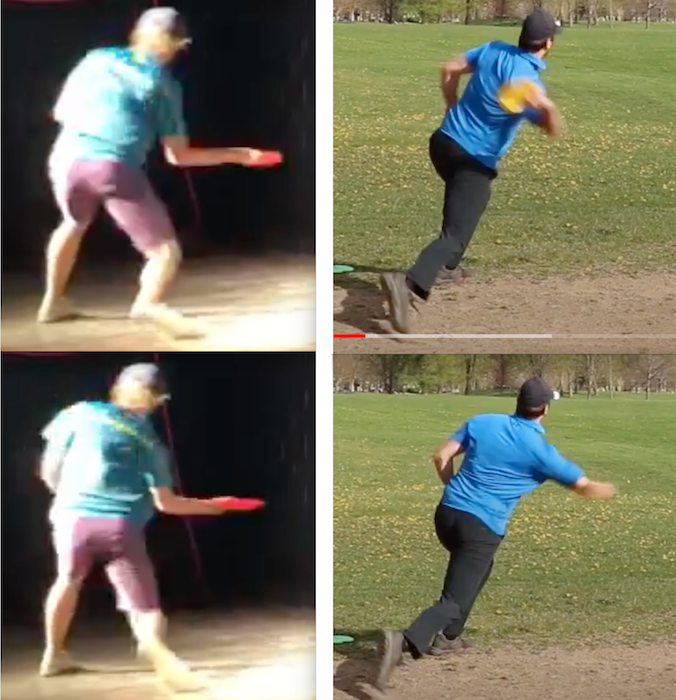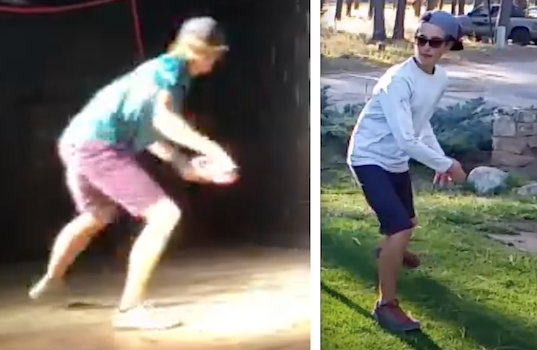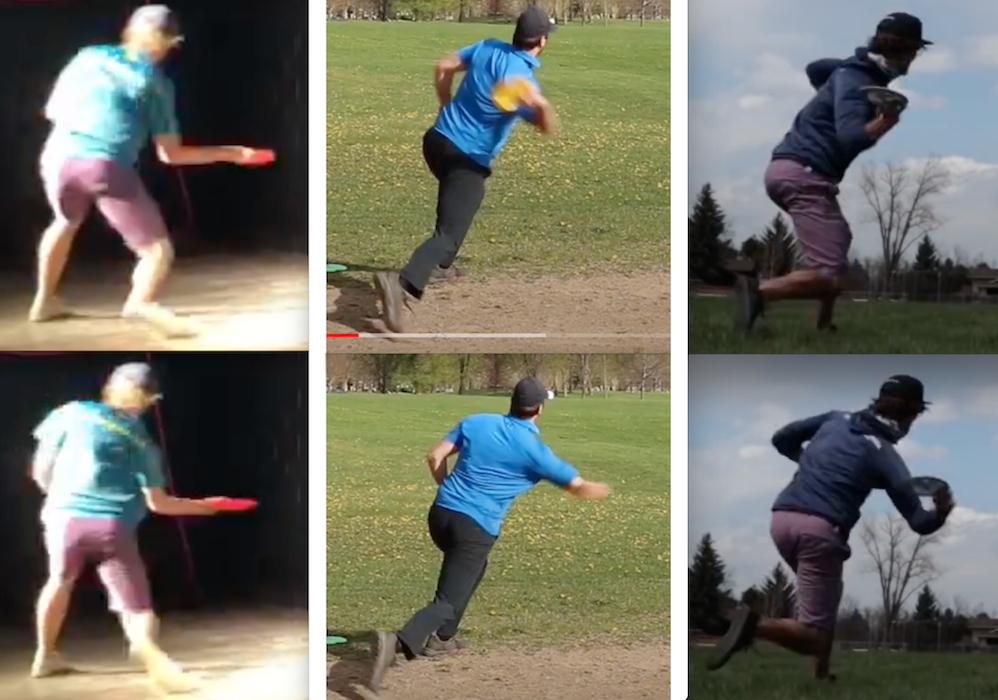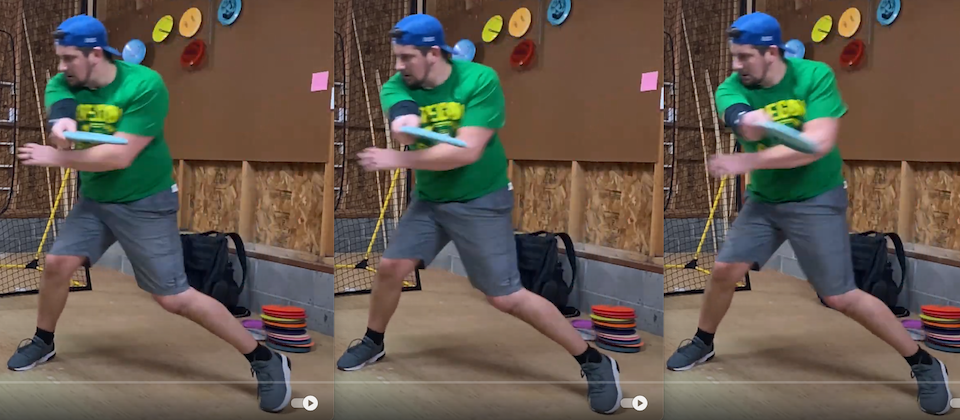I think Mr. Slingshot's technique might be the backhand equivalent to the late elbow cock, also kind of reminiscent of golf's "modern swing". He plants front foot completely and then completes the backswing and hyperextends elbow/wrist. Every pro I've seen throw completes the backswing just before or as the front foot is planting, not extending after. Looks so violent and sudden on the arm and not using the body very efficiently, also note the compression sleeve he is wearing now.
Can we talk more about this? I'm beginning to organize some content to share online as advice to people getting serious about form work. I will use a pendulum framework w/ cross-references.
I do not want over-reach or be a character assassin in that context (indeed, I'm not anywhere close to being an "expert"). However, I think Slingshot's increasing popularity and refusal to engage with other sources comes with a real risk to others. My concern started with knees and now you have me worried about elbows. So I figured it's good to talk about here.
In this case, I think Slingshot fell victim to an illusion. In some pros' forms, at the peak of the reachback you can see the disc getting tugged, revealing more of the disc wing to the viewer when viewed at 90 degrees to the tee. Slingshot says Drew Gibson is his fave player and says that the backwards "wrist flick" could be an "advanced move" present in Drew's form. But
if you watch Drew throw, what's happening is that as he falls forward into the plant, his presumably springy wrist flexes as his weight drops forward, revealing the profile of the disc as his wrist flexes a bit. It curls back in just after that when the initial jerk force on the wrist resolves. The disc never moves backwards away from the target at any point. Slingshot does acknowledge that you should "try everything" in his "reach out" video, but doesn't seem to have noticed the difference between his backswing and pros'.
I'm adding an on-topic anecdote - I just realized I used to have this exact same habit when trying to take the "loose arm" advice, and I was having significant elbow discomfort around that time. Some ulnar nerve irritation and a bit of pain at the center of elbow/triceps tendon.
At first I thought it may be due to my backwards rotating arm, but then I remembered that I started to drop the hyperextension
before SW22 got to work on me and that backwards rotation. The elbow pain went away. The backwards rotation and shoulder external rotation was more related to pec and shoulder discomfort and a bit of lateral ligament irritation (which makes sense).
My point isn't to armchair diagnose these issues, just to echo some concern and that it's good to point out form teaching that might come with elevated risk of injury.
In that spirit, it's a slightly different timing than Slingshot, but I just had a weird memory about
this older throw by Simon (pre elbow-injury). I noticed that his form was not
quite as smooth as it is now. His "finish and address" is different and the throw is slightly more violent. It's a little different than Slingshot's, but even though Simon's body/disc are moving forward throughout the throw, there's still a subtle jerk/hyperextension at the elbow right after the plant. You can also see a bit of vibration in his arm after the hit. Wanted to share in case I'm seeing shadows again.





